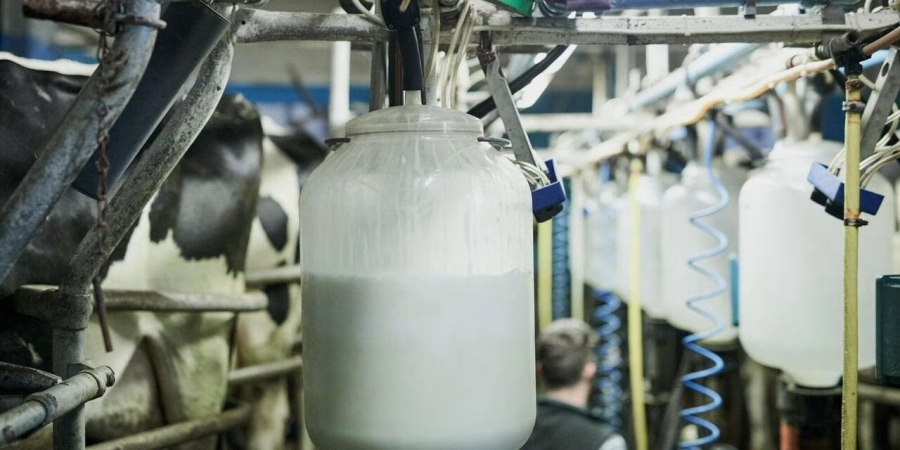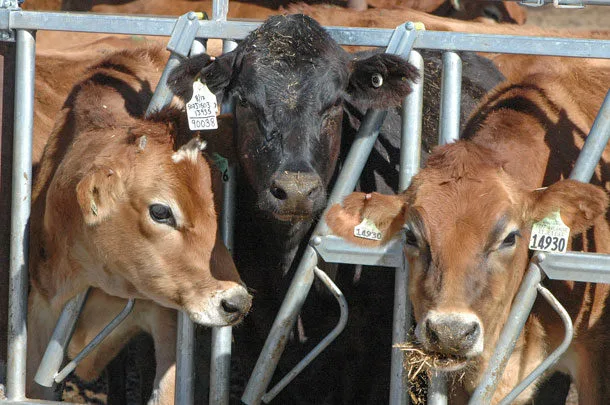Irish farmers demand higher milk prices to combat rising costs and market pressures. Can increased prices ensure the future of Ireland’s dairy sector?

Amidst the relentless financial pressures and unpredictable markets, Irish dairy farmers , with their unwavering determination, call for higher milk prices. Rising input costs, poor weather, and strict nitrates regulations have heavily burdened these farmers, reducing margins and threatening sustainability.
The dairy industry , a cornerstone of Ireland’s economy, supports rural livelihoods and contributes significantly to the national economy through exports and jobs. Organizations like the Irish Farmers Association (IFA) and the Irish Creamery Milk Suppliers Association (ICMSA) are advocating for fair milk prices, recognizing the industry’s vital role.
“We are at a critical juncture,” warned a representative from the IFA. “The current base milk prices are pushing us to the brink, especially with the surge in feed, fertilizer, and energy expenses. We need immediate relief.”
If these pressing issues are not promptly addressed, the dairy sector, a pillar of Ireland’s economy, could suffer a severe blow, forcing many farmers out of business. Addressing these challenges is not just important; it’s a matter of survival for Ireland’s dairy farmers.
As Irish dairy farmers grapple with the multifaceted challenges shaking their sector, one cannot overlook the stark figures that illustrate their plight. From declining production levels to stagnant milk prices, the data paints a clear picture of the adversities faced by those who form the backbone of Ireland’s dairy industry.
| Year | Total Milk Production (million liters) | Base Milk Price (€/liter) | Input Costs (€/liter) |
|---|---|---|---|
| 2018 | 7700 | 0.34 | 0.25 |
| 2019 | 7600 | 0.32 | 0.26 |
| 2020 | 7500 | 0.31 | 0.27 |
| 2021 | 7400 | 0.30 | 0.29 |
| 2022 | 7300 | 0.29 | 0.30 |
The figures above starkly demonstrate the mounting financial pressure on Irish dairy farmers, who are facing higher input costs without a corresponding increase in milk prices, leading to a vicious cycle of dwindling margins and decreased production.
The Multifaceted Challenge Facing Irish Dairy Farmers: Navigating Declining Production and Stagnant Prices
Irish dairy farmers face a significant challenge due to declining milk production and stagnant prices. Data from the Central Statistics Office (CSO) shows that milk volumes lag behind 2023 levels, creating pressure on farmers’ livelihoods.
The Irish Creamery Milk Suppliers Association (ICMSA) is leading the charge for change. Despite a slight improvement in the Global Dairy Trade (GDT) index and the Ornua Purchase Price Index (PPI), current prices still need to be improved. The ICMSA calls for a base milk price of 45c/L to restore sector confidence. High input costs and adverse weather conditions compound this need.
Stagnant prices and reduced production erode farmers’ margins, leading to tighter cash flows and difficulty managing costs. Stringent nitrate regulations and unpredictable weather patterns worsen this situation.
Higher milk prices are essential for the long-term viability of the sector. Addressing these challenges can restore confidence, stabilize the market, and ensure future growth.
The Escalating Costs Squeezing Ireland’s Dairy Sector: A Perfect Storm of Financial Pressures
| Parameter | 2022 | 2023 (Projected) |
|---|---|---|
| Average Milk Price (per liter) | €0.37 | €0.34 |
| Total Milk Production (million liters) | 8,000 | 7,800 |
| Input Costs Increase (%) | 15% | 10% |
| Weather Impact on Yield | Moderate | Severe |
| Nitrates Pressures Compliance Cost | €50 million | €60 million |
Rising input costs are a significant burden on Irish dairy farmers. The feed cost has surged due to global supply chain disruptions and local shortages. Similarly, fertilizer prices have increased due to high demand and supply constraints. Additionally, fluctuating oil and gas prices have caused energy costs to soar, impacting transportation and machinery expenses. Rising labor costs, influenced by higher minimum wages and labor shortages, add further financial pressure.
These escalating costs erode farmers’ slim margins, resulting in severe cash flow difficulties. Increased spending on essential inputs leaves farmers less financial flexibility for operational needs or investments in sustainability. Moreover, adverse weather conditions and strict nitrates regulations further strain their finances, threatening the viability of dairy farming in Ireland.
A Clarion Call for Financial Sustainability: Irish Dairy Farmers Advocate for Essential Base Milk Price Increase
Irish dairy farmers are demanding an increase in the base milk price to at least 45 cents per liter, as the Irish Creamery Milk Suppliers Association (ICMSA) advocates. This increase is essential for several reasons. Rising input costs, volatile weather, and strict nitrates regulations have tightened farmers’ margins. Without a price hike, many face unsustainable cashflows and further declines in milk production.
The call is more than a temporary plea; it’s crucial for restoring confidence in the sector. A higher base price would boost cash flow, allowing farmers to invest in resources and cover expenses adequately. Improved margins would help farmers withstand market pressures, ensuring a stable milk supply and fostering long-term growth and sustainability.
Increasing the base milk price also benefits the broader dairy market. Returning the value realized from market improvements—such as the recent 1.7% rise in the Global Dairy Trade and the 1.1 cents per liter increase in the Ornua Purchase Price Index—to farmers, the entire supply chain gains. Enhanced farmer profitability strengthens rural economies and the dairy supply chain, benefiting processors, retailers, and consumers. Thus, increasing the base milk price is vital for fortifying Ireland’s dairy sector.
Complexities and Constraints: The Role of Milk Processors in Pricing Dynamics
| Month | Global Dairy Trade Index (GDT) | Ornua Purchase Price Index (PPI) |
|---|---|---|
| January | 1,080 | 108.9 |
| February | 1,085 | 109.5 |
| March | 1,090 | 110.1 |
| April | 1,095 | 110.7 |
| May | 1,080 | 108.4 |
| June | 1,075 | 107.8 |
Milk processors influence milk pricing by acting as intermediaries between dairy farmers and the market. They determine the base milk price, factoring in global market trends, domestic supply, and costs. Their pricing decisions significantly impact farmers’ incomes.
Setting prices involves balancing market conditions indicated by the Global Dairy Trade (GDT) and the Ornua Purchase Price Index (PPI). The PPI recently showed a slight increase, reflecting a modest improvement. However, these gains do not always lead to higher payouts for farmers, as processors face financial pressures, including processing and distribution costs.
The Irish Creamery Milk Suppliers Association (ICMSA) has called for a milk price of 45c/L to restore confidence in the sector, stressing the tension between farmers’ needs and processors’ financial stability.
Although the Ornua PPI indicated an increase to 39.6c/L for May, this falls short of what farmers need. Processors argue that price increases must be sustainable in the market context and reflect real improvements in dairy product prices.
Based on transparent market understanding, practical changes in milk pricing require coordinated efforts between farmers and processors.
The Ripple Effect of Higher Milk Prices: Balancing Immediate Relief with Long-Term Market Dynamics
Increasing milk prices would offer immediate relief to dairy farmers, stabilizing cash flows and covering rising input costs. This support is crucial for maintaining production levels and preventing further declines in milk volumes.
However, higher prices may reduce consumer demand for dairy products, as price-sensitive consumers might turn to cheaper alternatives. This could cause an initial oversupply, impacting processors and retailers.
Higher milk prices encourage farmers to invest in advanced production technologies long-term, boosting efficiency and output. Consistent pricing could also attract new entrants, strengthening the supply base.
Internationally, Ireland’s dairy competitiveness could be affected. Higher costs might make Irish products less competitive. Still, improved quality and supply could capture niche markets willing to pay premium prices.
In conclusion, while a price increase is crucial for farmers, its broader impacts on supply, demand, and global market positioning must be carefully managed for long-term sustainability.
The Bottom Line
The Irish dairy sector faces several challenges, including declining milk production and stagnant prices, compounded by rising costs and environmental pressures. A key issue is the gap between what farmers earn for their milk and the increasing costs they face. It’s crucial for processors to fairly distribute market gains back to farmers to ease cash flow pressures faced by dairy producers.
Increasing the base milk price to at least 45c/L, as suggested by the Irish Creamery Milk Suppliers Association (ICMSA), is essential to restore confidence among producers. Transparency and timely price adjustments by milk processors, in line with market trends like those shown by the Ornua Purchase Price Index (PPI) and Global Dairy Trade (GDT), are also critical.
Tackling these issues calls for collaboration among processors, associations, and policymakers to support farmers. This would provide immediate financial relief and ensure the dairy industry’s resilient and prosperous future.
Key Takeaways:
- Financial Strain: Irish dairy farmers are under considerable financial strain due to declining milk prices and rising input costs.
- Production Decline: There is a tangible decline in milk production, impacting the overall market and supply chain.
- Advocacy for Fair Pricing: Industry bodies like the Irish Farmers Association and the Irish Creamery Milk Suppliers Association are advocating for a base milk price increase to support farmers.
- Regulatory Pressures: Stringent nitrate regulations and unpredictable weather patterns add to the challenges faced by dairy farmers.
- Call for Sustainable Practices: Ensuring financial sustainability through fair pricing can enable farmers to invest in better resources and practices, ultimately benefiting the broader agricultural sector.












